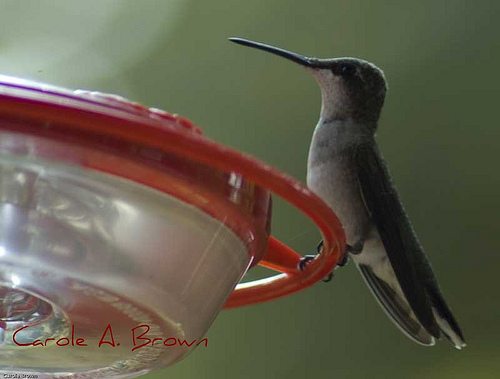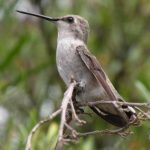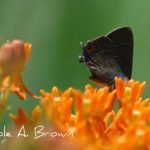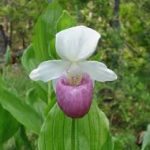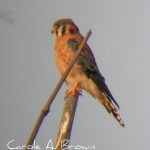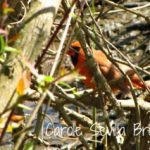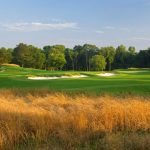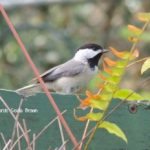My friend Karyl at Native Plant Wildlife Gardeners is already seeing Ruby-throated Hummingbirds in her Georgia garden. Lucky her!
But no matter where you live in the country, the time is soon approaching when you’ll see the return of these birds, too.
Ruby-throated hummingbirds are one of the most common and well-known hummingbird species in North America. These tiny birds are named for their distinctive, iridescent ruby-red throats, which are only visible on male birds.
Ruby-throated hummingbirds are migratory birds, spending the summer months in North America and the winter months in Central America. During the summer, they can often be seen flitting from flower to flower, gathering nectar and insects to fuel their high-energy lifestyle.
To attract ruby-throated hummingbirds to your yard, you can set up a hummingbird feeder filled with a simple mixture of sugar and water, or plant native flowers and shrubs that produce nectar. Some popular hummingbird-friendly plants include bee balm, cardinal flower, columbine, and phlox.
How to Know When to Expect Hummingbirds in your Wildlife Garden
There’s a great resource for watching the hummingbirds on their northern journey so that you’ll be prepared for their arrival to your Ecosystem Garden.
They’ve got a great map tracking the northern movement of the Ruby-throated Hummingbird

They’ve got species accounts for all of the most common North American species.
How to Attract Hummingbirds to your Wildlife Garden
The best resources for attracting hummers to your wildlife garden are written by hummingbird expert Sheri Williamson:
Planting a Hummingbird garden is your best bet when you want to attract these flying jewels. Contact your local native plant society for a list of the most appropriate native plants for the hummingbirds of your area.
You want to plan for a succession of blooms to last from Spring through early fall.
Here’s just a few native plants that I’ve got in my hummingbird garden in addition to my feeders:
- Lobelia cardinalis (Cardinal Flower)
- Lonicera sempervirens (Coral Honeysuckle) [Beware invasive Japanese Honeysuckle!]
- Monarda fistulosa (Bee Balm)
- Aquilegia canadensis (Columbine)
- Various Salvias
The characteristic common to these plants is that they are red with tubular flowers, and many hummers are attracted to this type of flower.
These delicate birds feed their young a wide variety of insects. Pesticide spraying can be very detrimental to these nestlings and should be avoided at all costs.
More From Ecosystem Gardening:
Submit your review | |

